The microparsing galaxy is a relatively new inhabitant of aquariums. She attracts fish lovers with her appearance and multi-colored coloring.
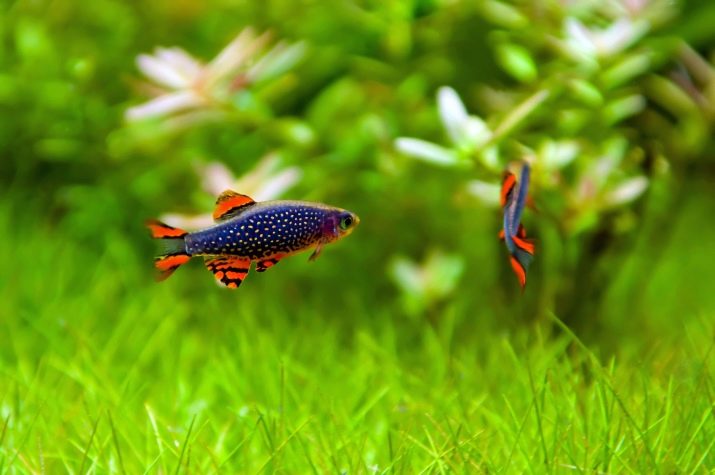
Description
The microparsing galaxy is an aquarium fish from the Karpov family, the study of which began only in 2006. The length of the body of the creature does not exceed 2.5 centimeters, and on average it reaches only 2 centimeters. The main color of the galaxy is gray-blue, but in males and females it may slightly differ. Male representatives have a richer color, as well as bright stripes of black and pink, covering the fins. In addition, the entire surface is covered with small spots of beige shade that resemble pearls in shape.
The color of the female fish is not so bright, and the shade is rather close to green-blue.
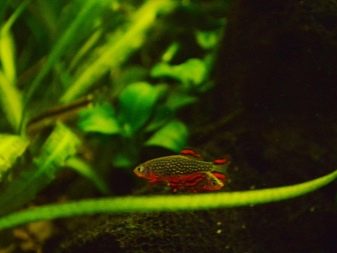
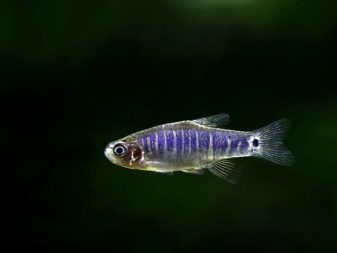
Specks are present, but not so bright. The body shape of females is more rounded. With proper care of the microparsing, the galaxy lives in the aquarium for about a couple of years. In nature, these fish live in Burma, choosing shallow water bodies overgrown with algae. Quite often, in the works of scientists, the name of this species sounds like a parsing galaxy, zebrafish galaxy, margaritata and star parsing.
Microassays are very passive. - it’s not typical for them to show aggression, moreover, they are very shy. This explains their comfortable living with other species of fish that are not aggressive.

Males can fight for females and for territory, but in most cases it goes without serious injuries.
The cost of fish is determined depending on the size of the individuals. The grown fry, whose body length barely reaches a centimeter, cost about 80 rubles per gadget.
"Teenagers", whose size has already reached 1.5 centimeters, will cost more - about 100 rubles. Finally, for adult fish, the length of which ranges from 2 to 2.2 centimeters, about 120 rubles will have to be paid.

Compatibility
In the case when the owner of the galaxies plans their further breeding, it is better to keep them in the aquarium without any neighbors, even shrimps and snails. Such a solution will allow spawning without using a third-party tank. In the case when microassortments become inhabitants of a common aquarium, small and non-aggressive creatures, for example, cardinals, neons or wedge-shaped patches, will suit them as neighbors.
Cockerels, guppies, soma and swordsmen also have excellent compatibility with galaxies.

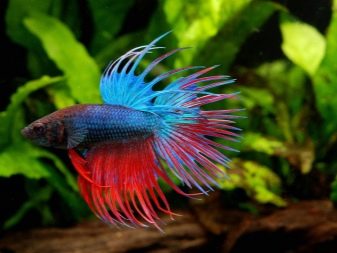
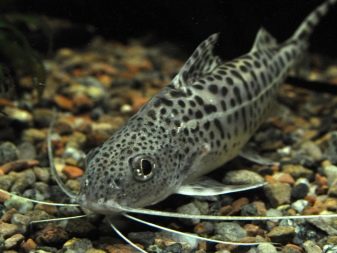
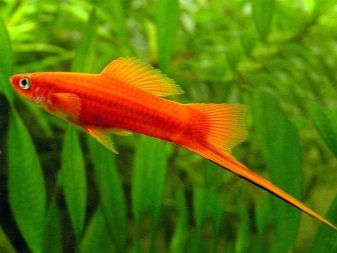
The average rate of comfortable cohabitation is observed in shrimp, crabs and eels. At all, cichlids, astronotuses, goldfish, and koi carps are not recommended as neighbors for microassays.
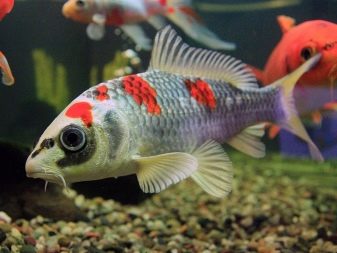
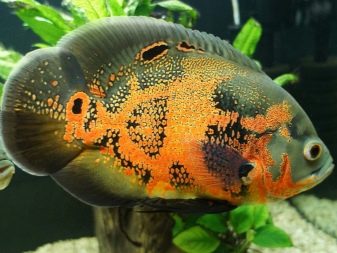
Growing conditions
Keeping a galaxy in the aquarium is pretty simple. Containers of various sizes and even shapes are suitable for them, but a 30-liter vessel is considered optimal. The only condition is to ensure that at least one liter of water falls on one fish, or better, a little more. In this case, all the inhabitants will feel comfortable and at ease. We must not forget about the arrangement of space for spawning, especially if the breeding of fish is in the plans.
If you choose a small aquarium, then inside you still have to create the right environment. Planting is recommended, but not in excessive quantities. The amount of soil should exceed 3-4 centimeters in height. Decor is done using small items made from natural materials.
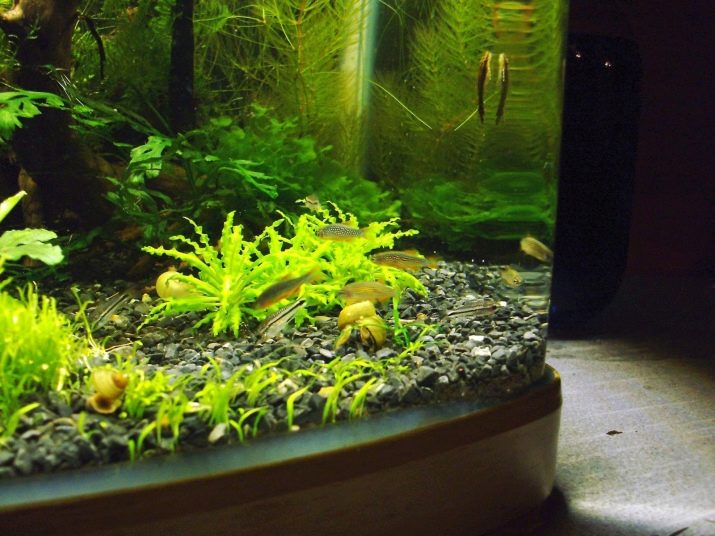
A small number of males should live in a small aquarium, otherwise the likelihood of constant fights and collisions is high.
In a large aquarium, it would be nice to plant a large amount of greenery and arrange enough shelters. If there are not enough plants, then the creatures will start to get scared and spend most of the time in shelters. The height of the soil should be maintained within 4 to 6 centimeters. The number of galaxies in this case can be large. In general, the minimum flock boundary corresponds to 20 specimens, while even several hundred will feel great in bulk vessels.
Caring for galaxies involves regular feeding and maintaining optimal water performance. It is important that the liquid always remains clean, which means that regular replacements have been made to help cleanse nitrates and ammonia. The level of alkalis in the aquarium is recommended to be maintained at level 7, and the hardness can withstand from 2 to 15.
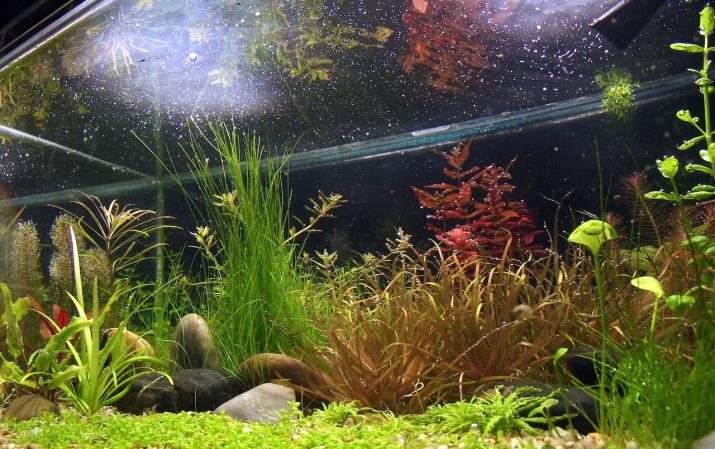
An internal filter will be more than enough. Lighting in the aquarium can be bright.
In fact, the amount of light plays a role only in the case of plants, and galaxies feel great in any light conditions. The best, however, is considered diffused and weak light, similar to natural. The water temperature can be maintained in the range from 20 to 26 degrees with a bias to the lower side.
Plants in the aquarium can be waterfowl, or simply planted in the ground. A good choice are lemongrass, water kubomba and floating salvinia. Many materials are suitable as soil - granite, coarse sand, small pebbles, as well as decorative soil. If you give preference to dark materials, then galaxies against its background will become especially beautifully distinguished. It is necessary to place inside the vessel and basic devices for keeping fish - a filter and an aeration system.

It is important that the latter does not create strong currents that “knock down” the fish.
Diseases of galaxies occur as a result of improper care or even nutrition.Trichodinosis is the result of the use of low-quality feed, the use of pre-treated soil or infected plants. It will be possible to cure the fish if it is quarantined in a timely manner and antibiotics are also used. Obesity is the result of improper feeding - either excess or unbalanced. It’s possible to understand that the galaxy is experiencing problems by the behavior of the pet - it not only gets fat, but also becomes lethargic and refuses to eat.
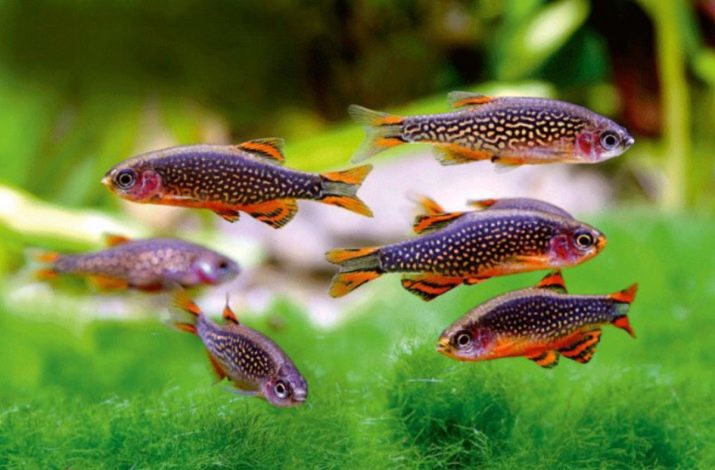
Treatment in this case involves a reduction in diet and nutritional adjustment.
Micro-razor-eyed microselections become in the case of poor quality water used to fill the aquarium. If measures are not taken in a timely manner, then the creature will first go blind, and then die. Fungal diseases usually affect the condition of scales, fins and gills. The cause of the disease is non-compliance with sanitary standards, for example, a dirty aquarium or the lack of regular cleaning of waste from other fish. For treatment, antibiotics and antifungal drugs will be required.

Feeding rules
The fish does not have special nutritional requirements. Frozen, dry and lively food is perfect for her. Under natural conditions, galaxies prefer small insects, algae and zooplankton, so all of the above products are also present in their diet. A good solution in this case are bloodworms, tubule and artemia. Protein needs to be alternated with plant foods. From dry feeds, it is better to choose mixtures intended for carp or nano-fish.
But, only live feeds, for example, microworms or other microorganisms, are suitable for the fry of the galaxy. New fish, still experiencing stress due to “relocation,” will also respond much better to live food. Artificial should be introduced in stages, waiting for the moment when the fish gets used to a new habitat.

It is important to mention that excessively large feed particles would be good to grind or even grind for greater convenience of the inhabitants of the aquarium. Microsamples are fed twice a day, in the morning and in the evening.
It is important for the galaxy to select a balanced diet and in no case to prevent its monotony. In addition, the preferences of one or another inhabitant of the aquarium should be taken into account, adding either more protein or plant components. Of dry feed, experts recommend paying attention to Tetra productsoffering individual mixes for many species of fish. In addition, the brand can find special compounds that enhance the color of pets, suitable for feeding fry or saturated with vitamins. It is better to take the food packaged in a box, and not by weight, given the date of manufacture and expiration date. It is necessary to store the dry composition in a closed state, otherwise the development of pathogenic flora in it is likely.
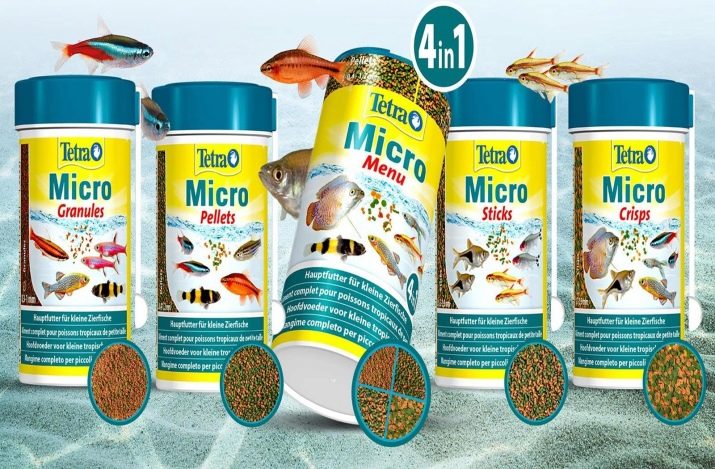
Sexual differences and reproduction
Breeding parsing at home is not a particularly difficult task. Direct reproduction is recommended in a separate vessel, the volume of which ranges from 5 to 7 liters. The selected container is filled with clean water and populated by plants. The presence of the latter is necessary, since in the absence of vegetation, breeding of fish will be impossible. The brightest male and the fat female with a round belly are taken from the pack.
Visually, it is easy to identify them both in the shape of the body and in color. Females look pale, plump and slightly flattened. Males, on the contrary, look elongated and slender. Their color is saturated, and in addition there is a bend on the back.
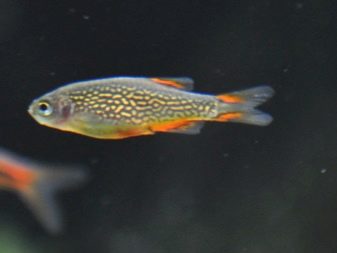
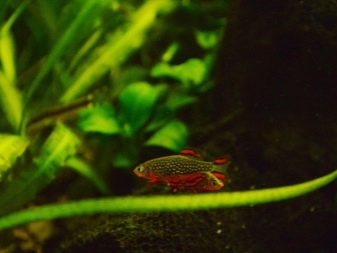
It is important that the temperature of the liquid does not go beyond 20-22 degrees, and the acidity and hardness are slightly increased.
During spawning, males will actively pursue females, and if there are several of them in the same team, then they will arrange a fight.The goal of the winning male is to lure the female into the vegetation.
Spawning occurs in the thickets, and eggs spawn several times. Usually, this process occurs twice or thrice in a week, and the total number of eggs varies from 35 to 50 specimens. Larvae will appear in three days. It is important to consider that adult individuals protect the larvae and eggs, and therefore do not touch, but they can take fry for food.
Larvae transform into fry after a couple of days.
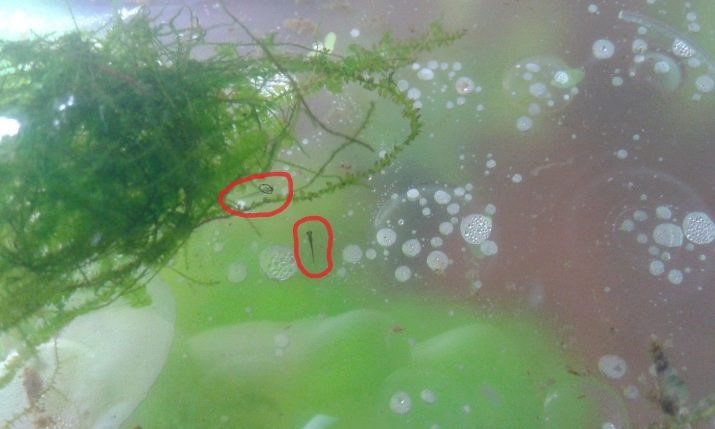
They immediately need to start feeding, preferably ciliates. The water in the aquarium at this moment should be kept at 25 degrees. During the day, the fry will remain in the middle layer of water, and at night they will stick to the walls of the vessel. The fry are not afraid of diseases, the purity of the water in the aquarium at this moment does not play a significant role. After a month and a half, the fry will turn into adults, and in three months they will already become mature.
On the microparsing galaxy see below.










